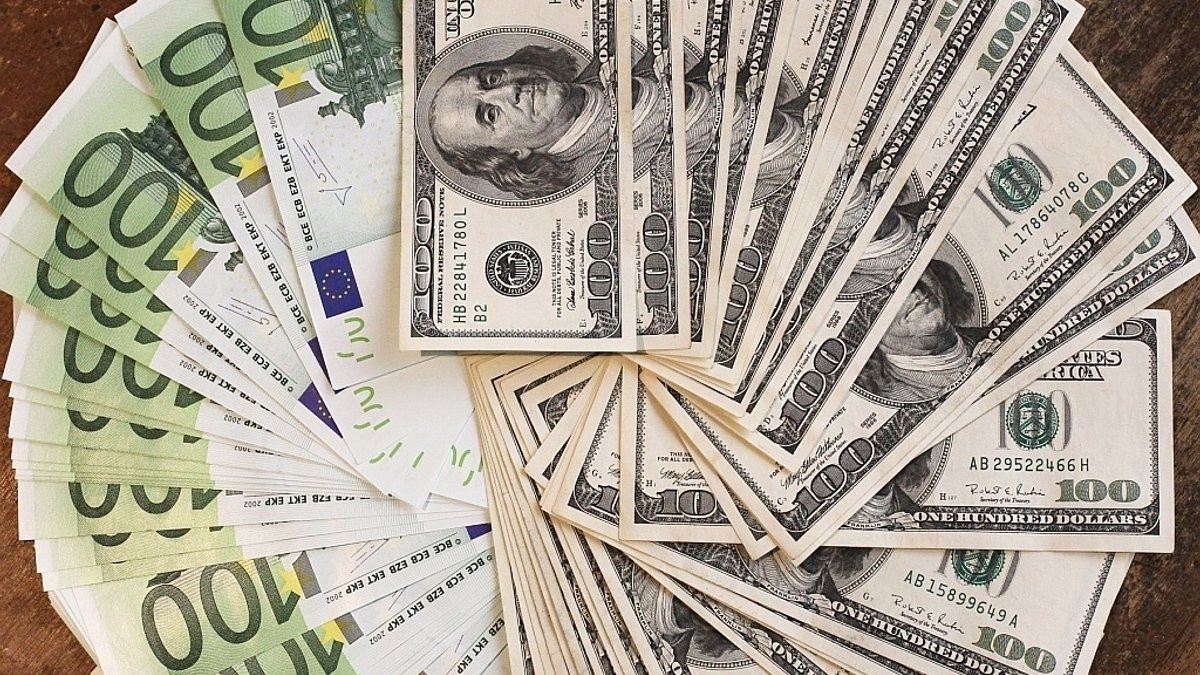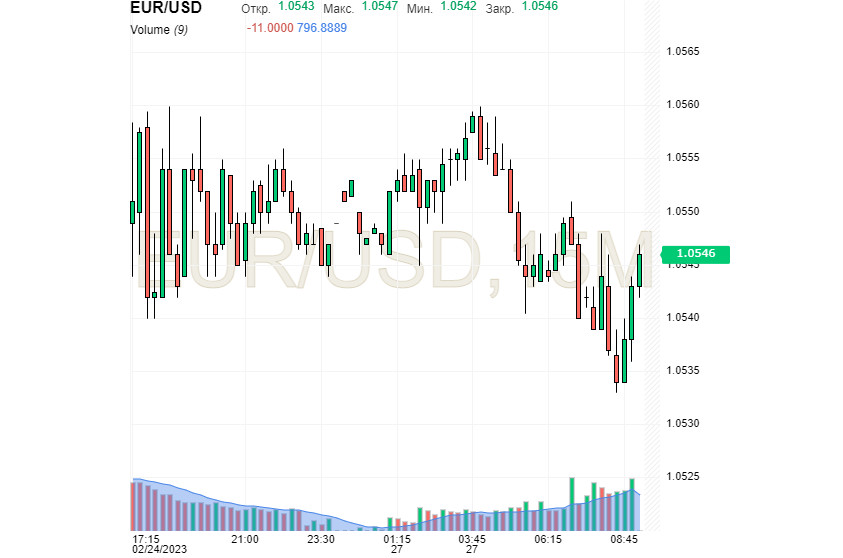
The dollar's current confidence and its rapid rise are due to ambiguous data on U.S. inflation. Market expectations of further Federal Reserve rate hikes have grown. On the other hand, the euro has visibly weakened, having lost its former gains.
The greenback substantially strengthened at the beginning of the week, remaining close to seven-week highs after the release of strong but mixed economic reports on U.S. inflation. In such a situation, traders and investors have been allowing the Fed to raise interest rates for a long time. On Monday morning, February 27, the U.S. currency continued the previous week's uptrend, overtaking the euro. Earlier, the single currency updated its lows since January 6, falling as low as 1.0550. By now the EUR/USD was cruising near 1.0546, trying to overcome the downward spiral.

According to analysts, the greenback has opportunities for further growth against the euro. But in the short term, MUFG Bank analysts allow the EUR/USD pair to fall to a critically low level of 1.0330. Nordea Bank currency strategists agree with this, expecting a short-term decline of the pair in the coming months. However, the pair could confidently rise in the long term, Nordea Bank said.
Current macro data from the U.S. gave a boost to the dollar by showing an increase in inflation. According to reports, the Core PCE Price Index, which excludes food and energy, unexpectedly jumped by 0.6% m/m in January. Experts had forecast it to rise only 0.4% m/m. Take note that the Core PCE Price Index saw a similar growth rate seven months ago, in June 2022.
Against this background, another round of risk aversion on the markets was launched. The noticeable growth of Core PCE Price Index in annual terms (by 4.7% y/y with expected reduction to 4.3% y/y) added fuel to the fire. According to analysts, the fact that the inflation indicator has demonstrated a rise after a three-month decline, is an alarming signal for the central bank.
However, the markets are paying attention to the acceleration of annual inflation from 4.6% to 4.7% (instead of the forecasted slowdown to 4.3%). Some experts call this phenomenon an "inflation stroke," which has greatly worried the Fed. According to analysts, the current rate of inflation in the U.S. is a strong argument in favor of "cooling" the national economy. The growth of U.S. inflation over the past few months is due to an "overheated" labor market. The situation can only be turned around by "cooling down" the economy and cutting jobs, experts say.
According to Philip Jefferson of the Fed, U.S. wage growth is currently too high to meet a timely and sustained return to the 2% inflation target. Against this backdrop, the central bank will have to return to raising rates and continue this strategy until they peak. According to preliminary estimates, the Fed's key rate will approach 6% this year. Now the majority of analysts (72.3%) are laying in the next rate hike in March 2023 (by 25 basis points, to 4.75-5%). Other experts (27.7%) expect an increase by 50 bps at once. Thus, the U.S. currency continues to strengthen due to increasing expectations of further rate hikes.
Such a situation reduces the likelihood of a so-called "soft landing" of the economy. As a result, the risks of a subsequent deterioration of the economic situation in the U.S. are increasing. This forces the Fed to raise rates and keep them longer than expected. Against this background, the risk of recession in the U.S. economy increases. According to Evercore analysts, the central bank is unlikely to return to raising rates by 50 bps in the near future, but after the release of the latest macro data in the U.S., such a development is quite possible.
The economic reports released at the end of the previous week showed an increase in real spending by Americans and rising inflation rates. According to the Wells Fargo currency strategists, this data is ambiguous, because the rapid growth of wages, although it contributes to increased spending, is a serious problem for the Fed. "The sustained strength in real personal income is a mixed blessing. While it could provide a path to the elusive soft landing by supporting consumer spending more sustainably than reduced savings or reliance on more costly credit cards; it could also point to slower declines in services inflation which could compel the Fed to go higher for longer. The core PCE deflator rose 0.6% and demonstrates the road to 2% inflation will be bumpy," Wells Fargo concludes.





















